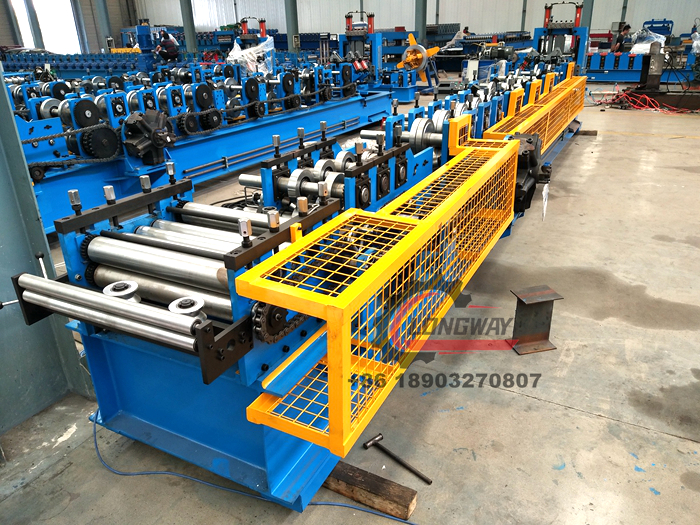sheet metal punching line
Sheet Metal Punching Line An Overview of the Process and Its Importance
Sheet metal punching is a vital manufacturing process widely used in various industries, ranging from automotive and aerospace to electronics and construction. The punching line involves a series of mechanical operations that transform flat sheets of metal into intricate shapes required for different applications. This article explores the sheet metal punching line, highlighting its components, process, and significance in modern manufacturing.
Understanding Sheet Metal Punching
At its core, sheet metal punching is a process that involves the use of a punch press to create holes, cutouts, or shapes in a sheet of metal. The process begins with a flat sheet of metal, typically ranging from 0.5 mm to several millimeters in thickness, depending on the application. The punching line is equipped with various tools, including punches, dies, and a conveyor system, which work together to ensure efficient production.
Key Components of a Punching Line
1. Punch Press The heart of the punching line is the punch press, which can be mechanical or hydraulic. It exerts force on the punch, enabling it to penetrate the metal sheet and create the desired shape. Hydraulic presses are commonly used for thicker materials, while mechanical presses are suited for lighter, thinner sheets.
2. Punching Tooling Tooling consists of the punch and die sets, which are custom-made for specific shapes and sizes. The punch is the tool that performs the cutting, while the die serves as a counterpart that supports the sheet material during the punching operation. The precision of these tools is crucial, as it directly affects the quality and accuracy of the final product.
3. Material Handling System An efficient material handling system is essential for the smooth operation of the punching line. Automated systems, such as conveyors and robotic arms, are often employed to move sheets of metal into position, retrieve punched parts, and manage scrap material. This automation enhances productivity and minimizes the risk of workplace injuries.
4. Control Systems Modern punching lines are equipped with advanced control systems that facilitate programming and monitor the entire operation. These computerized systems allow operators to input specifications for various designs, adjust parameters, and oversee the timing of the punching processes, ensuring consistency and precision.
The Punching Process
sheet metal punching line

The punching process begins with loading the sheet metal onto the press. Once positioned, the operator or automated system initiates the punching operation. The punch press exerts force on the punch, which penetrates the sheet, creating the desired hole or shape while simultaneously ejecting scrap material. The cycle repeats for each part, with the machine operating at high speeds to maximize output.
The punching process can be further enhanced through techniques such as nesting, where multiple shapes are arranged on the sheet to reduce material waste. Additionally, secondary operations like embossing, bending, and forming can be integrated into the punching line to create more complex parts without the need for additional processes.
Importance of Sheet Metal Punching
Sheet metal punching plays a crucial role in modern manufacturing for several reasons
- Precision and Consistency The use of automated presses and precise tooling ensures that each part produced is uniform in quality, which is essential for industries with tight tolerances.
- Cost-Effectiveness Punching is a fast and efficient way to produce large volumes of parts, reducing labor costs and material waste, thereby enhancing overall profitability.
- Versatility With the ability to work with various materials (e.g., aluminum, steel, copper) and produce a wide range of shapes, punching is highly adaptable to meet diverse industry needs.
- Sustainability By optimizing material usage and reducing waste, sheet metal punching aligns with sustainable manufacturing practices, making it a responsible choice for businesses seeking to minimize their environmental impact.
Conclusion
In conclusion, the sheet metal punching line is an essential component of the manufacturing landscape. Its ability to efficiently produce precise and consistent metal parts makes it indispensable across various industries. As technology continues to evolve, the punching process is expected to become even more efficient, further solidifying its place in modern manufacturing practices. Embracing advancements in automation and tooling will ensure that sheet metal punching remains a cornerstone of production for years to come.
-
Roof Panel Machines: Buying Guide, Types, and PricingNewsJul.04, 2025
-
Purlin Machines: Types, Features, and Pricing GuideNewsJul.04, 2025
-
Metal Embossing Machines: Types, Applications, and Buying GuideNewsJul.04, 2025
-
Gutter Machines: Features, Types, and Cost BreakdownNewsJul.04, 2025
-
Cut to Length Line: Overview, Equipment, and Buying GuideNewsJul.04, 2025
-
Auto Stacker: Features, Applications, and Cost BreakdownNewsJul.04, 2025
-
Top Drywall Profile Machine Models for SaleNewsJun.05, 2025








